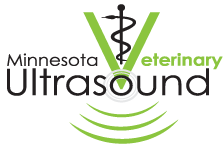
Standing in front of House of Six
Hello Everyone! Just wanted to let you know that I am back from another successful IVUSS conference in Amsterdam. What is IVUSS? IVUSS is the International Veterinary Ultrasound Society. We are a small but growing, passionate group of small animal veterinarians from around the world who love to perform ultrasound! Our conference includes boarded veterinary cardiologists, radiologists, internists, and a large population of mobile veterinary sonographers like myself. We meet once a year to learn cutting edge information and techniques on a wide range of topics that we all see in our practice. This year’s topics included lectures from boarded specialists on endocrinology, cardiology, portosystemic shunts, and ophthalmic ultrasonography. We also held a round table discussion where sonographers from around the world shared information on how to best serve our clients (you!). I am very excited to announce that I was elected to the IVUSS board as Member at Large. I am honored to be selected and am looking forward to being actively involved with this growing organization of talented, driven, veterinarians.
Our first speaker at the conference was Dr. Rebecca Berg, DVM, DACVIM, ECVIM who spoke on endocrinology diseases. Although she hails from Sweden, she completed her residency at UC-Davis. Primary feline hyperaldosteronism also known as Conn’s syndrome is a hot topic now both here and abroad. It is being increasingly recognized in our feline patients. Primary hyperaldosteronism occurs when there is an aldosterone secreting tumor (carcinoma or adenoma) of the adrenal gland. It occurs in cats older than 10 years of age and has no gender or breed disposition. This functional tumor causes hypokalemia, systemic hypertension, hypernatremia, metabolic alkalosis, and increased creatine kinase. Clinical signs are reflective of hypokalemia and include cervical ventroflexion, hindlimb weakness, plantigrade stance, listlessness, and ataxia due to hypokalemic polymyopathy. Affected cats may also show clinical signs of systemic hypertension such as acute blindness, intraocular hemorrhage, retinal detachment, and neurological signs.
The first diagnostic step is to rule out secondary causes for hyperaldosteronism such as heart disease and chronic renal disease. Plasma renin is the test of choice for diagnosing primary hyperaldosteronism, however, this test is not readily available. An ABDOMINAL ULTRASOUND is very helpful in evaluating the adrenal glands for a mass or generalized enlargement. The kidneys can be evaluated at the same time. If there is suspicion for heart disease, an echocardiogram can also be performed to better evaluate the heart. Our local specialist, Dr. Jenny Cho DVM, DACVIM, recommends measuring baseline aldosterone levels for diagnosing primary hyperaldosteronism and interpreting the results with respect to potassium levels. In addition to ultrasound, CT and MRI imaging studies can be considered.
Treatment options for primary hyperaldosteronism include medical management with potassium supplementation, amlodipine, spironolactone or surgical adrenalectomy. Unfortunately, surgical adrenalectomy is associated with high morbidity and mortality rates. However, cats that survive the post-operative period have a good long-term prognosis.
Although not a common disease, you should keep primary hyperaldosteronism on your differential diagnosis list when you see feline patients with systemic hypertension and hypokalemia, especially if they are refractory to treatment. If you have supporting clinical signs and lab work, an abdominal ultrasound makes an easy, noninvasive, and relatively inexpensive next step for your patients.
